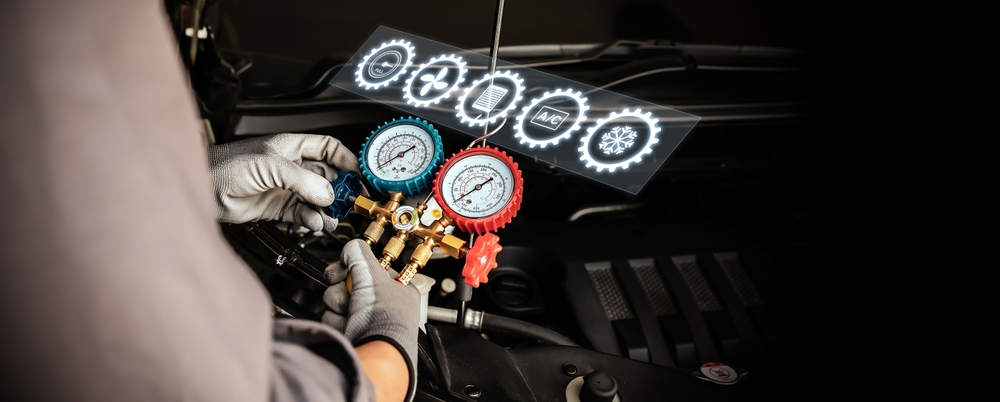Train to Become an Auto Technician: Career & Skills
Train to become a skilled automotive technician with hands-on mechanic training that covers engines, brakes, electrical systems, ADAS, hybrids and EVs. This guide walks through program types, costs, places to train, job settings, and how ASE certification and real-world experience boost career prospects. Learn what to study and where to get practical training for a stable, in-demand trade in vehicle service and repair.

Overview:
Automotive technician training prepares students with the practical skills and technical know-how required to diagnose, repair, and maintain today’s vehicles. Programs combine workshop practice and classroom theory so graduates can handle everything from routine maintenance to complex, computerized systems found in modern cars.
Core subjects typically included in training:
-
Engine systems and repair — Study of internal combustion engine principles, fuel delivery, ignition and timing systems, and engine rebuild methods.
-
Electrical and electronic systems — Instruction on batteries, charging and starting circuits, wiring, sensor systems, and troubleshooting vehicle electronics.
-
Brake systems — Coverage of hydraulic braking, anti-lock braking systems (ABS), pad and rotor service, and diagnostic approaches for brake faults.
-
Suspension and steering — Work with shocks, struts, springs, wheel alignment theory, and repair of steering components.
-
Transmission and drivetrain — Examination of manual and automatic transmissions, clutch service, differentials, and drivetrain diagnostics.
-
HVAC (Heating, Ventilation, and Air Conditioning) — Operation of climate control systems, refrigerant handling best practices, and HVAC troubleshooting.
-
Diagnostic methods and tools — Hands-on use of scan tools, digital multimeters, oscilloscopes, and systematic fault-finding strategies.
-
Safety procedures and regulations — Shop safety protocols, correct tool usage, hazardous materials handling, and compliance with industry standards.
Emerging technologies:
As vehicles become more software-driven and energy-efficient, training increasingly covers hybrid and electric vehicle systems, Advanced Driver Assistance Systems (ADAS), and modern engine management strategies. Technicians who understand EV architecture, high-voltage safety, and calibration of ADAS components will be well-positioned for future demand.
Program lengths and formats:
- Certificate programs: Usually 6 to 12 months long; focused on practical skills for quick entry into the workforce.
- Associate degrees: Approximately two years; combine deeper technical training with general education coursework.
- Apprenticeships: Mix on-the-job learning with classroom instruction and often last 3 to 5 years; they typically include a paid wage while you train.
- Manufacturer-specific training: Short, model- or brand-focused courses that range from a few weeks to several months, teaching proprietary systems and diagnostic procedures.
Where to get trained:
- Technical schools and community colleges: Common providers of certificates and associate degrees with shop-based labs and hands-on training.
- Vocational high schools: Offer early exposure and a foundation for students considering automotive careers.
- Apprenticeship programs: Provided by unions, employers, or industry groups; they offer practical, paid experience alongside classroom learning.
- Online courses: Useful for theory, diagnostics, and supplemental instruction but cannot fully replace in-person shop practice.
- Manufacturer training centers: Automakers such as Ford, Toyota, and BMW operate specialized programs for their vehicles and diagnostics.
Career outlook and work settings:
Although the U.S. Bureau of Labor Statistics projects little to no overall employment growth for automotive service technicians and mechanics from 2021 to 2031, the industry still expects about 67,000 openings per year on average over that period, driven largely by retirements and turnover. Skilled technicians who can service advanced electrical systems, hybrids, EVs, and ADAS-equipped vehicles will be particularly sought after.
Common workplaces include dealership service departments, independent repair shops, fleet maintenance facilities, auto parts retailers with service centers, government or municipal maintenance shops, and self-employment running an independent garage.
Costs and financial assistance:
Training costs vary by program type, school, and location. Typical ranges include:
- Certificate program (6–12 months): $5,000–$15,000
- Associate degree (2 years): $10,000–$25,000
- Apprenticeships (3–5 years): Often paid positions, so trainees earn while learning
- Manufacturer-specific courses: $1,000–$5,000 per course
Many institutions offer financial aid, scholarships, grants, and payment plans. Apprenticeships frequently pay wages, and some employers will cover training expenses or reimburse tuition.
Preparing for a career as an automotive technician:
- Strengthen math and science fundamentals, especially physics and basic chemistry related to vehicle systems.
- Gain practical experience by working on your own vehicle, helping friends, or volunteering at local garages.
- Keep up with industry changes—follow trade magazines, online forums, and resources about EVs, hybrid systems, and ADAS.
- Pursue certifications like ASE to validate your skills and increase hireability.
- Practice clear communication—being able to explain problems and repairs to customers is essential.
- Cultivate strong problem-solving skills and an attention to detail to diagnose and resolve issues efficiently.
Conclusion:
Training as an automotive technician offers a reliable route into a hands-on career that blends mechanical skill with troubleshooting and adapting to new technologies. Whether you aim to specialize in classic cars, focus on the latest electric vehicles, or run your own shop, a solid training program combined with ongoing education and relevant certifications will keep your skills marketable as the industry continues to evolve.






